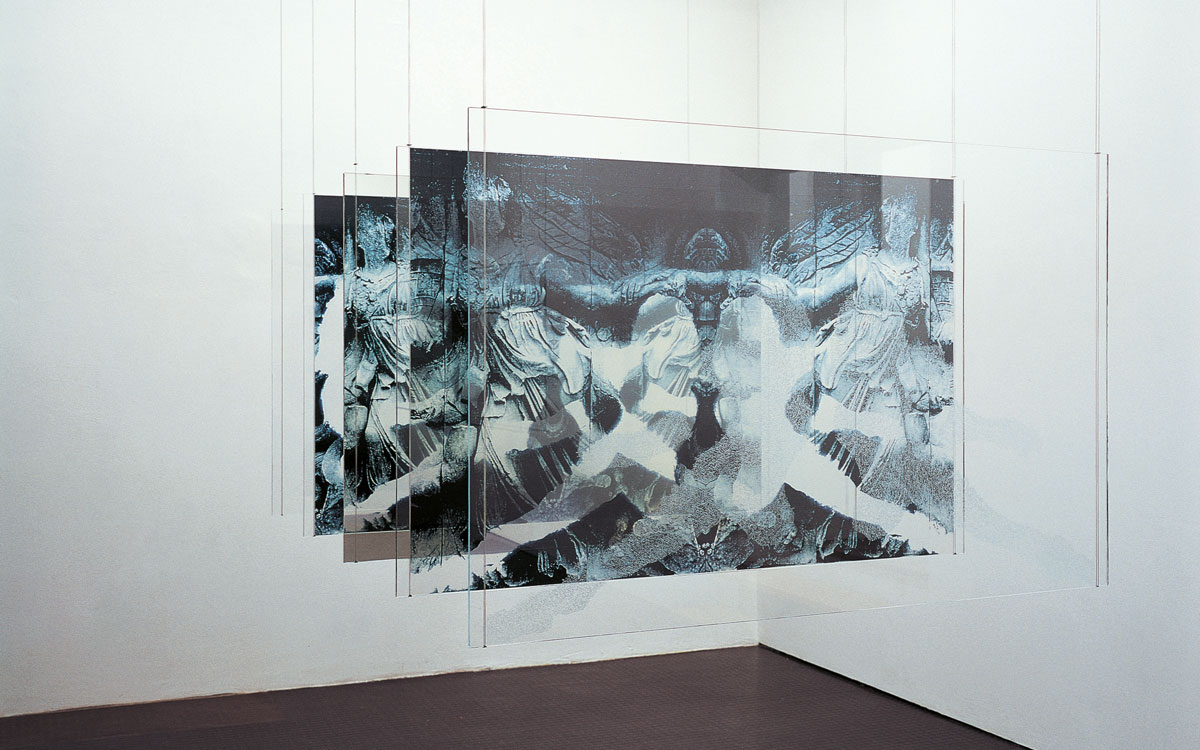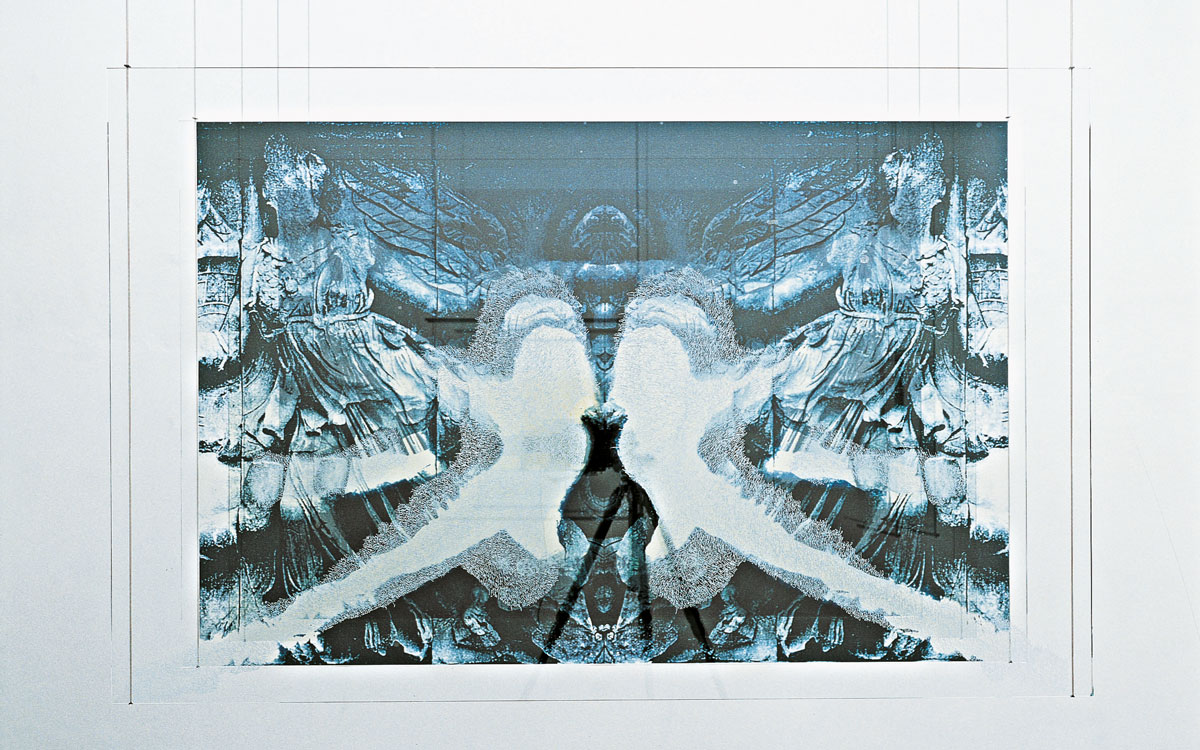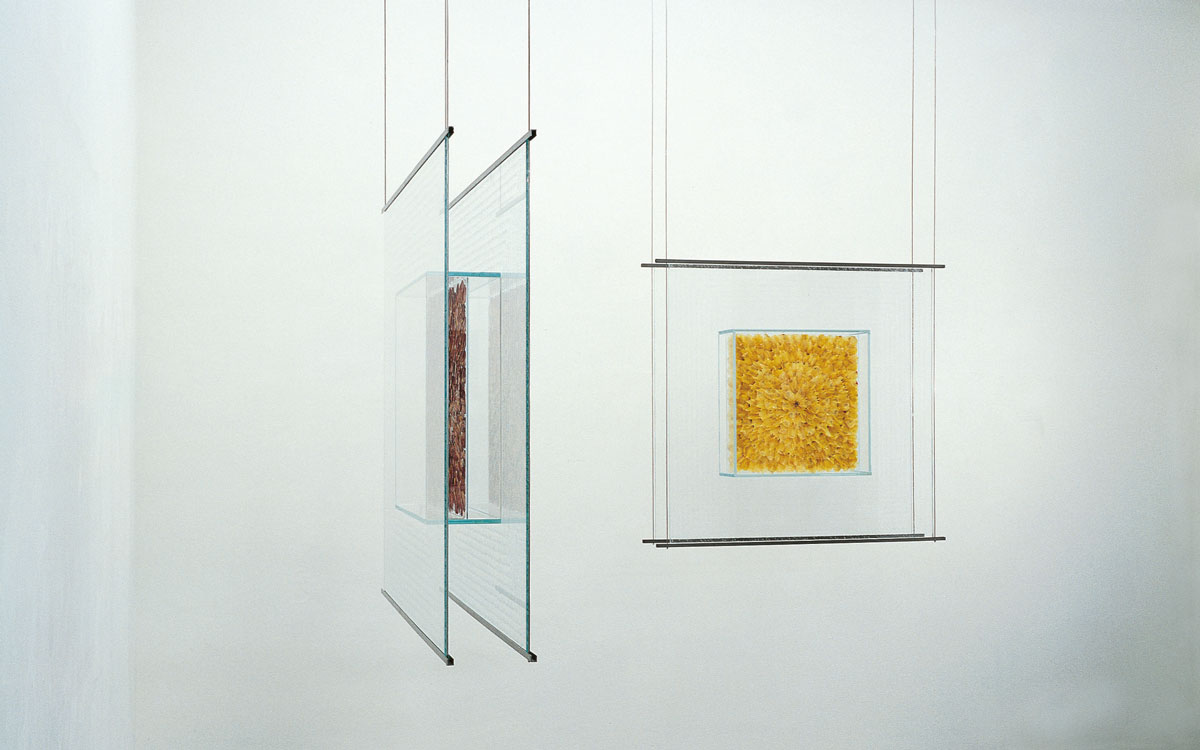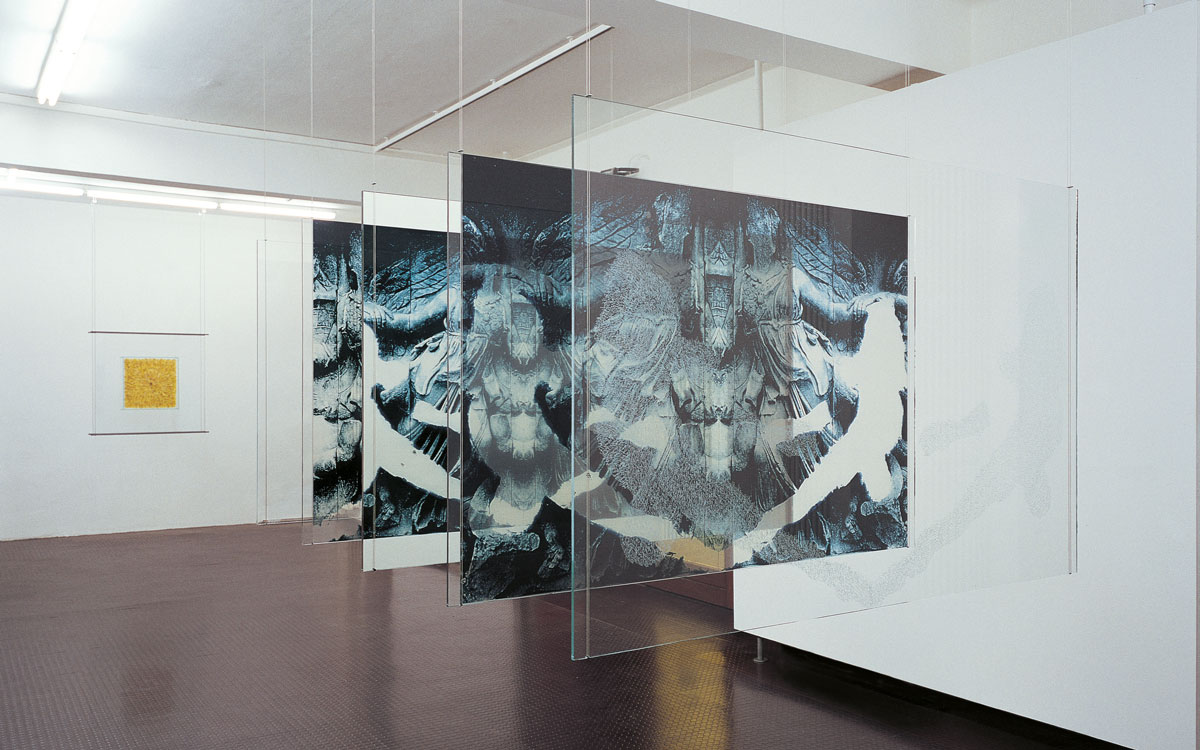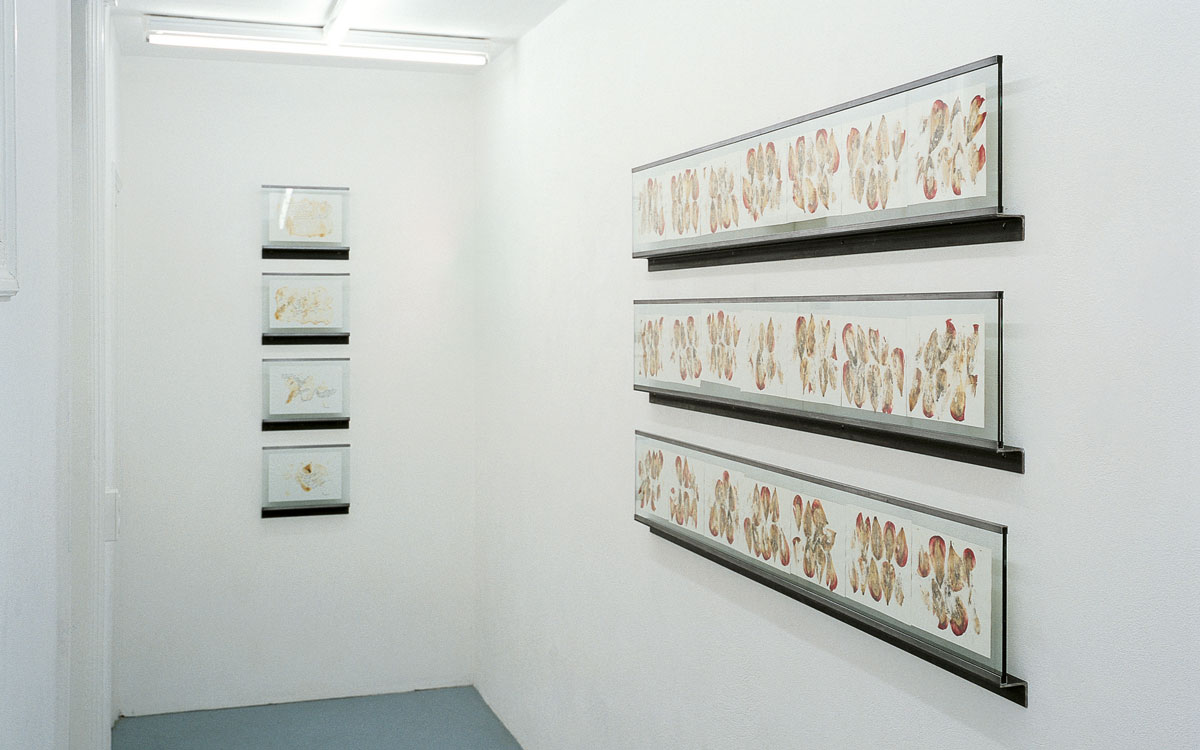In front of and within the work
Mariott Stollsteiner’s objects of glass, mirrors, large slides, digital-printing, flower leaves, steel and text are complete before ever being shown in an exhibition. This is in the sense of successful positioning of the various style elements both relative to one another and as a whole. Thereafter, however, the situation of the works in their public context as accidental style elements becomes of primary import. Their real basis is their accessibility both physically and in other senses. The works only really achieve perfection in spiritual and physical dialogue with the viewer.
Normally, works such as the “goddesses’ meeting-point“ are called installations. The title is meant to imply specific objects being installed in specific space that is considered the frame, so to speak, in both the topographical and semantic senses. This space is a more or less neutral frame of reference in which the installation is set. Mariott Stollsteiner employs a different method in her “goddesses’ meeting-point“, which shows five different goddesses in its five variations, each with an empty temporal silhouette from the Greek Pergamon altar. Each variant constitutes a basic unit in a void for the space used in concert with the mirror, the glass pane with large slide and the glass pane with engraved text. In »between I«, two of them are hung back to back, i.e. mirror back side to mirror back side. In »between II«, two hang at right angles to one another in space. “goddesses’ meeting-point” isn’t an installation in the classical sense but an open composition of graphical and styling elements in space that yields more than the sum of its parts. One ought perhaps to speak of an “experimental arrangement”.
The exhibition room for this work exists less as a specific room with quantifiable dimensions but more as a movement space or, more exactly, a space offering movement opportunities. As the title of the exhibition clearly states, “goddesses’ meeting-point“ has to do with interim space, as is the case in Stollsteiner’s other works. “Interim space” here means “between the glass panes”, and also means viewers being placed between themselves and their mirror images reflected in the glass panes. Viewers experience this as well as being indissolubly associated with the graphics in the objects. In this sense, the space between also means “between viewers in space”, who enter into relationships with one another consciously or unconsciously, whether via verbal communication on what they see or via silent viewing and mutual movement both between themselves and between the works.
In “goddesses’ meeting-point”, the bodies of the giants are deleted from the photo cutouts of the Pergamon altar used by Stollsteiner. Stollsteiner has engraved text on the glass panes hanging in front of these that correspond to the temporal silhouettes of the giant figures. Viewed from the front, the engravings overlap the empty spaces in the photos. Between text and graphics, there is just enough space to allow a person to pass through sideways. The narrow opening obliges everyone squeezing through to constantly view the front aspect of the graphics and thus become both a picture in front of the picture and a part of the work.
This means on the one hand that the viewer directly accesses the classic iconography of the work. The classical story of the contest of the giants against the world of the gods shown by the Pergamon altar deals with temporal hubris which is drastically punished by the gods and goddesses and is in the last resort the search for the reality of all temporal things. This is the subject emphasised by Stollsteiner by deleting the temporal appearance of the giants and setting the divine word at and on a layer or level before and above the figures. Viewers thus appear between temporal and divine design and become manifest as individuals.
On the other hand, viewers enter into visual interaction with the work. The panes arranged in line and the mirror result in a number of interrelated effects that merge viewers into the work optically. Their mirror images bear traces of the work and are apparently covered with text, only to appear again clearly and suddenly from the dark or wholly transparent portions of the graphics.
Viewers are guests in “goddesses’ meeting-point“. Reflection, or at best self-knowledge, is what viewers receive both in front of, and in, this work. They recognise themselves to be outsiders on the surfaces of mirror and text and dive into graphics and text both visually and spiritually. Movement and view, body and eye are split in the process of perception. Where viewers see themselves as active individuals in the work, the work appears mainly a mute reflector. Where viewers pause to follow the abstract text made so by the reversal of image and to experience the movement dynamics of the figures in the graphics increased by the axially symmetric duplication of their movements, the work appears to be in motion.
The giants embody the temporal in ancient mythology, which painfully hits its limitations. Stollsteiner has removed the giants from the graphics and thus allowed a mirror surface to be created in which viewers see themselves in hopeless contest with the gods in the giants’ stead. We recognise ourselves, feel our limitations; we also sense the active alternatives open to us. The texts on the front pane show the way. Stollsteiner selected the same two texts for all five variants of “goddesses’ meeting-point”. That text is a line from the Octavio Paz poem, „By passion the world is bound, by passion too it is released“ and a passage from the Gospel according to St. Johns, ” Ye must be born again. The wind bloweth where it listeth, and thou hearest the sound thereof, but canst not tell whence it cometh, and whither it goeth: so is every one that is born of the Spirit.”
The two energy poles of passion and spirit (which every soul needs, as Stollsteiner states in deviation from the original) close in text form the empty space of the temporal. The texts are commentaries on the mythological events and can simultaneously be understood to indicate the path to follow.
Stollsteiner has repetitively written the texts in sequence in constant flow in lines following the giants’ temporal bodily silhouettes that penetrate and overlap one another like a mantra until the form is filled. This text veil confronts viewers as a mirror image and in virtually illegible form due to the overlapping of the lines. Viewers must know the source to decipher it … or not. The type of perception that Stollsteiner wants the viewer of her work to experience goes beyond the analytical level. Freedom of action predicates freedom of spirit.
Text: Thomas Huber

